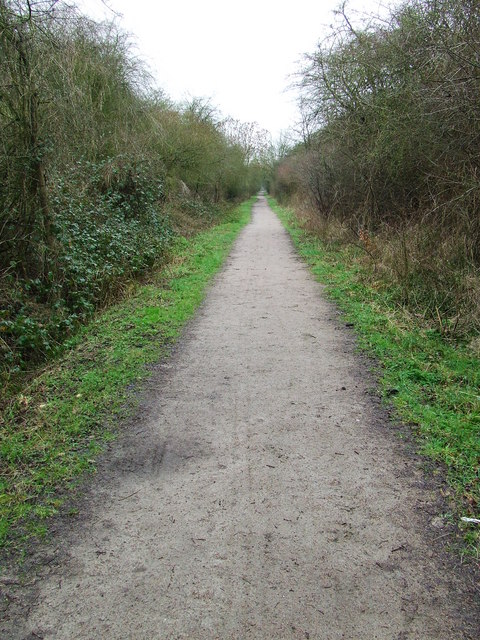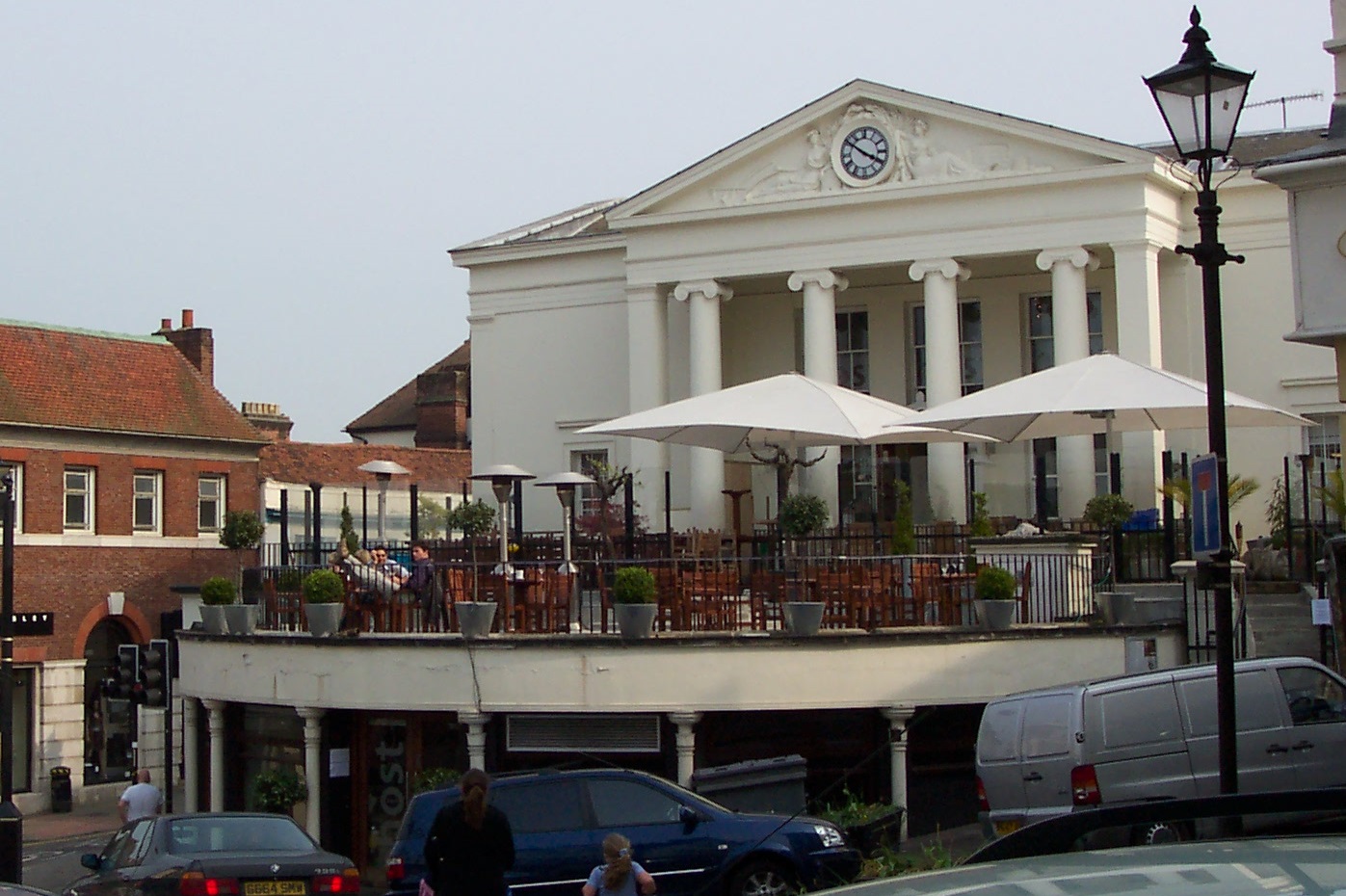|
Farnham, Essex
Farnham is a small village in Essex, England, situated near Bishop's Stortford. The main features are Farnham Church of England Primary School, the church and the Three Horseshoes pub in Hazel End, which some consider a hamlet in its own right. The population is approximately 300, increasing to 410 at the 2011 census. It is divided up into several areas, such as Farnham, Hazel End, Bell's Cottages, Saven End and Farnham Green. The name is derived from the Fernham (Hamlet in the ferns). This village is also mentioned in the ''Anglo-Saxon Chronicle'' as the site of a battle between King Alfred’s army and a Viking army that had captured a great war-booty in 893. King Alfred defeated the Vikings and recovered the booty. ::Þa hie gefengon micle herehyð, & þa woldon ferian norþweardes ofer Temese in on Eastseaxe ongean þa scipu. Þa forrad sio fierd hie foran, & him wið gefeaht æt Fearnhamme, & þone here gefliemde, & þa herehyþa ahreddon... ::They (the Vikings) had now sei ... [...More Info...] [...Related Items...] OR: [Wikipedia] [Google] [Baidu] |
Uttlesford
Uttlesford is a local government district in Essex, England. Its council is based in the market town of Saffron Walden. At the 2011 Census, the population of the district was 79,443. Other notable settlements include Great Dunmow, Elmdon, Stebbing, Stansted Mountfitchet, Thaxted, Debden, Little Chesterford and Felstead among other settlements. History Its name is derived from its location within the ancient hundred of Uttlesford,Open Domesday: Hundred of Uttlesford. Accessed 6 January 2022. usually spelled ''Vdelesford'' Open Domesday: Saffron Walden. Accessed 6 January 2022. or ''Wdelesford'' [...More Info...] [...Related Items...] OR: [Wikipedia] [Google] [Baidu] |
Essex
Essex () is a county in the East of England. One of the home counties, it borders Suffolk and Cambridgeshire to the north, the North Sea to the east, Hertfordshire to the west, Kent across the estuary of the River Thames to the south, and Greater London to the south and south-west. There are three cities in Essex: Southend, Colchester and Chelmsford, in order of population. For the purposes of government statistics, Essex is placed in the East of England region. There are four definitions of the extent of Essex, the widest being the ancient county. Next, the largest is the former postal county, followed by the ceremonial county, with the smallest being the administrative county—the area administered by the County Council, which excludes the two unitary authorities of Thurrock and Southend-on-Sea. The ceremonial county occupies the eastern part of what was, during the Early Middle Ages, the Anglo-Saxon Kingdom of Essex. As well as rural areas and urban areas, it forms ... [...More Info...] [...Related Items...] OR: [Wikipedia] [Google] [Baidu] |
Bishop's Stortford
Bishop's Stortford is a historic market town in Hertfordshire, England, just west of the M11 motorway on the county boundary with Essex, north-east of central London, and by rail from Liverpool Street station. Stortford had an estimated population of 41,088 in 2020. The district of East Hertfordshire, where the town is located, has been ranked as the best place to live in the United Kingdom, UK by the Halifax Quality of Life annual survey in 2020. The town is commonly known as “Stortford” by locals. History Etymology The origins of the town's name are uncertain. One possibility is that the Saxons, Saxon settlement derives its name from 'Steorta's ford' or 'tail ford', in the sense of a 'tail', or tongue, of land. The town became known as Bishop's Stortford due to the acquisition in 1060 by the Bishop of London. The River Stort is named after the town, and not the town after the river. When cartographers visited the town in the 16th century, they reasoned that the tow ... [...More Info...] [...Related Items...] OR: [Wikipedia] [Google] [Baidu] |
Anglo-Saxon Chronicle
The ''Anglo-Saxon Chronicle'' is a collection of annals in Old English, chronicling the history of the Anglo-Saxons. The original manuscript of the ''Chronicle'' was created late in the 9th century, probably in Wessex, during the reign of Alfred the Great (r. 871–899). Multiple copies were made of that one original and then distributed to monasteries across England, where they were independently updated. In one case, the ''Chronicle'' was still being actively updated in 1154. Nine manuscripts survive in whole or in part, though not all are of equal historical value and none of them is the original version. The oldest seems to have been started towards the end of Alfred's reign, while the most recent was written at Peterborough Abbey after a fire at that monastery in 1116. Almost all of the material in the ''Chronicle'' is in the form of annals, by year; the earliest are dated at 60 BC (the annals' date for Caesar's invasions of Britain), and historical material follows u ... [...More Info...] [...Related Items...] OR: [Wikipedia] [Google] [Baidu] |
Domesday Book
Domesday Book () – the Middle English spelling of "Doomsday Book" – is a manuscript record of the "Great Survey" of much of England and parts of Wales completed in 1086 by order of King William I, known as William the Conqueror. The manuscript was originally known by the Latin name ''Liber de Wintonia'', meaning "Book of Winchester", where it was originally kept in the royal treasury. The '' Anglo-Saxon Chronicle'' states that in 1085 the king sent his agents to survey every shire in England, to list his holdings and dues owed to him. Written in Medieval Latin, it was highly abbreviated and included some vernacular native terms without Latin equivalents. The survey's main purpose was to record the annual value of every piece of landed property to its lord, and the resources in land, manpower, and livestock from which the value derived. The name "Domesday Book" came into use in the 12th century. Richard FitzNeal wrote in the '' Dialogus de Scaccario'' ( 1179) that the bo ... [...More Info...] [...Related Items...] OR: [Wikipedia] [Google] [Baidu] |
Clavering Hundred
Clavering hundred was a hundred – or geographical subdivision – comprising parishes and settlements in Essex and Norfolk. Hundreds were divisions of areas of land within shires or counties for administrative and judicial purposes – and for the collection of taxes. In the '' Domesday Book'' of 1086, there were 27 places listed as part of the hundred. The two largest settlements within the hundred were Raveningham, with 115.5 households - according to the Domesday Book - and Clavering, with 80 households. Clavering had the largest taxable value within the hundred. Locations in Essex * Bentfield Bury * Berden * Bollington Hall * Clavering * Farnham * Manuden * Peyton Hall * Pinchpools * Ugley * Pledgdon Hall Locations in Norfolk * Aldeby * Ellingham * Gillingham * Haddiscoe * Hales * Heckingham * Kirby Cane * Norton Subcourse * Raveningham * Stockton * Thurlton * Toft Monks * Wheatacre Four further Clavering hundred settlements in Norfolk - Ierpestuna, Naruest ... [...More Info...] [...Related Items...] OR: [Wikipedia] [Google] [Baidu] |
Primary School
A primary school (in Ireland, the United Kingdom, Australia, Trinidad and Tobago, Jamaica, and South Africa), junior school (in Australia), elementary school or grade school (in North America and the Philippines) is a school for primary education of children who are four to eleven years of age. Primary schooling follows pre-school and precedes secondary schooling. The International Standard Classification of Education considers primary education as a single phase where programmes are typically designed to provide fundamental skills in reading, writing, and mathematics and to establish a solid foundation for learning. This is ISCED Level 1: Primary education or first stage of basic education.Annex III in the ISCED 2011 English.pdf Navigate to International Standard Classification of Educati ... [...More Info...] [...Related Items...] OR: [Wikipedia] [Google] [Baidu] |
Herts
Hertfordshire ( or ; often abbreviated Herts) is one of the home counties in southern England. It borders Bedfordshire and Cambridgeshire to the north, Essex to the east, Greater London to the south, and Buckinghamshire to the west. For government statistical purposes, it forms part of the East of England region. Hertfordshire covers . It derives its name – via the name of the county town of Hertford – from a hart (stag) and a ford, as represented on the county's coat of arms and on the flag. Hertfordshire County Council is based in Hertford, once the main market town and the current county town. The largest settlement is Watford. Since 1903 Letchworth has served as the prototype garden city; Stevenage became the first town to expand under post-war Britain's New Towns Act of 1946. In 2013 Hertfordshire had a population of about 1,140,700, with Hemel Hempstead, Stevenage, Watford and St Albans (the county's only ''city'') each having between 50,000 and 100,000 resident ... [...More Info...] [...Related Items...] OR: [Wikipedia] [Google] [Baidu] |
Stansted Mountfitchet
Stansted Mountfitchet is an English village and civil parish in Uttlesford district, Essex, near the Hertfordshire border, north of London. According to the 2001 census it had a population of 5,533, increasing to 6,011 at the 2011 census. The village is served by Stansted Mountfitchet railway station. Stansted Mountfitchet is situated in north-west Essex near the Hertfordshire border and 3 miles (5 km) north of Bishop's Stortford. Stansted Airport is from the village. The village has three primary schools (Bentfield Primary School, St Mary's (C of E) Primary School and Magna Carta Primary Academy) and one high school which was renamed the Forest Hall School in September, 2013. History Stansted was a Saxon settlement (the name means 'stony place' in Anglo-Saxon) that predates the Norman conquest. In the 1086 Domesday Book, Stansted was in the ancient hundred of Uttlesford. It was one of many villages and manors controlled by the powerful Robert Gernon de Montfichet (from ... [...More Info...] [...Related Items...] OR: [Wikipedia] [Google] [Baidu] |
National Curriculum Assessment
The National Curriculum assessment usually refers to the statutory assessments carried out in primary schools in England, colloquially known as standard attainment tests (SATs). The assessments are made up of a combination of testing and teacher assessment judgements and are used in all government-funded primary schools in England to assess the attainment of pupils against the programmes of study of the National Curriculum at the end of Key Stages 1 and 2 when most pupils are aged 7 and 11 respectively. Until 2008, assessments were also required at the end of Key Stage 3 (14-year-olds) in secondary schools after which they were scrapped. History The assessments were introduced following the introduction of a National Curriculum to schools in England and Wales under the Education Reform Act 1988. As the curriculum was gradually rolled out from 1989, statutory assessments were introduced between 1991 and 1995, with those in Key Stage 1 first, following by Key Stages 2 and 3 respec ... [...More Info...] [...Related Items...] OR: [Wikipedia] [Google] [Baidu] |
Mathematics
Mathematics is an area of knowledge that includes the topics of numbers, formulas and related structures, shapes and the spaces in which they are contained, and quantities and their changes. These topics are represented in modern mathematics with the major subdisciplines of number theory, algebra, geometry, and analysis, respectively. There is no general consensus among mathematicians about a common definition for their academic discipline. Most mathematical activity involves the discovery of properties of abstract objects and the use of pure reason to prove them. These objects consist of either abstractions from nature orin modern mathematicsentities that are stipulated to have certain properties, called axioms. A ''proof'' consists of a succession of applications of deductive rules to already established results. These results include previously proved theorems, axioms, andin case of abstraction from naturesome basic properties that are considered true starting poin ... [...More Info...] [...Related Items...] OR: [Wikipedia] [Google] [Baidu] |
Reading (process)
Reading is the process of taking in the sense or meaning of letters, symbols, etc., especially by sight or touch. For educators and researchers, reading is a multifaceted process involving such areas as word recognition, orthography (spelling), alphabetics, phonics, phonemic awareness, vocabulary, comprehension, fluency, and motivation. Other types of reading and writing, such as pictograms (e.g., a hazard symbol and an emoji), are not based on speech-based writing systems. The common link is the interpretation of symbols to extract the meaning from the visual notations or tactile signals (as in the case of Braille). Overview Reading is typically an individual activity, done silently, although on occasion a person reads out loud for other listeners; or reads aloud for one's own use, for better comprehension. Before the reintroduction of separated text (spaces between words) in the late Middle Ages, the ability to read silently was considered rather remarkable. M ... [...More Info...] [...Related Items...] OR: [Wikipedia] [Google] [Baidu] |








.jpg)